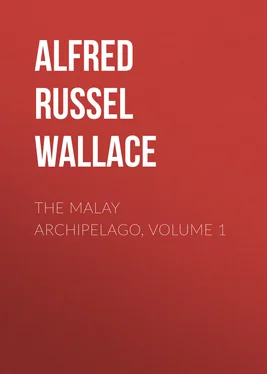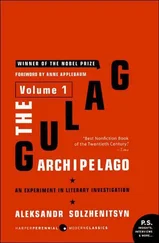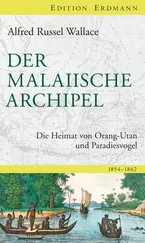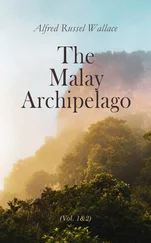Alfred Wallace - The Malay Archipelago, Volume 1
Здесь есть возможность читать онлайн «Alfred Wallace - The Malay Archipelago, Volume 1» — ознакомительный отрывок электронной книги совершенно бесплатно, а после прочтения отрывка купить полную версию. В некоторых случаях можно слушать аудио, скачать через торрент в формате fb2 и присутствует краткое содержание. Жанр: Путешествия и география, foreign_edu, foreign_antique, foreign_prose, на английском языке. Описание произведения, (предисловие) а так же отзывы посетителей доступны на портале библиотеки ЛибКат.
- Название:The Malay Archipelago, Volume 1
- Автор:
- Жанр:
- Год:неизвестен
- ISBN:нет данных
- Рейтинг книги:4 / 5. Голосов: 1
-
Избранное:Добавить в избранное
- Отзывы:
-
Ваша оценка:
- 80
- 1
- 2
- 3
- 4
- 5
The Malay Archipelago, Volume 1: краткое содержание, описание и аннотация
Предлагаем к чтению аннотацию, описание, краткое содержание или предисловие (зависит от того, что написал сам автор книги «The Malay Archipelago, Volume 1»). Если вы не нашли необходимую информацию о книге — напишите в комментариях, мы постараемся отыскать её.
The Malay Archipelago, Volume 1 — читать онлайн ознакомительный отрывок
Ниже представлен текст книги, разбитый по страницам. Система сохранения места последней прочитанной страницы, позволяет с удобством читать онлайн бесплатно книгу «The Malay Archipelago, Volume 1», без необходимости каждый раз заново искать на чём Вы остановились. Поставьте закладку, и сможете в любой момент перейти на страницу, на которой закончили чтение.
Интервал:
Закладка:
Alfred Russel Wallace
The Malay Archipelago. Volume I. (of II.)
CHAPTER I. PHYSICAL GEOGRAPHY
From a look at a globe or a map of the Eastern hemisphere, we shall perceive between Asia and Australia a number of large and small islands forming a connected group distinct from those great masses of land, and having little connection with either of them. Situated upon the Equator, and bathed by the tepid water of the great tropical oceans, this region enjoys a climate more uniformly hot and moist than almost any other part of the globe, and teems with natural productions which are elsewhere unknown. The richest of fruits and the most precious of spices are Indigenous here. It produces the giant flowers of the Rafflesia, the great green-winged Ornithoptera (princes among the butterfly tribes), the man-like Orangutan, and the gorgeous Birds of Paradise. It is inhabited by a peculiar and interesting race of mankind—the Malay, found nowhere beyond the limits of this insular tract, which has hence been named the Malay Archipelago.
To the ordinary Englishman this is perhaps the least known part of the globe. Our possessions in it are few and scanty; scarcely any of our travellers go to explore it; and in many collections of maps it is almost ignored, being divided between Asia and the Pacific Islands. It thus happens that few persons realize that, as a whole, it is comparable with the primary divisions of the globe, and that some of its separate islands are larger than France or the Austrian Empire. The traveller, however, soon acquires different ideas. He sails for days or even weeks along the shores of one of these great islands, often so great that its inhabitants believe it to be a vast continent. He finds that voyages among these islands are commonly reckoned by weeks and months, and that their several inhabitants are often as little known to each other as are the native races of the northern to those of the southern continent of America. He soon comes to look upon this region as one apart from the rest of the world, with its own races of men and its own aspects of nature; with its own ideas, feelings, customs, and modes of speech, and with a climate, vegetation, and animated life altogether peculiar to itself.
From many points of view these islands form one compact geographical whole, and as such they have always been treated by travellers and men of science; but, a more careful and detailed study of them under various aspects reveals the unexpected fact that they are divisible into two portions nearly equal in extent which differ widely in their natural products, and really form two parts of the primary divisions of the earth. I have been able to prove this in considerable detail by my observations on the natural history of the various parts of the Archipelago; and, as in the description of my travels and residence in the several islands I shall have to refer continually to this view, and adduce facts in support of it, I have thought it advisable to commence with a general sketch of the main features of the Malayan region as will render the facts hereafter brought forward more interesting, and their bearing upon the general question more easily understood. I proceed, therefore, to sketch the limits and extent of the Archipelago, and to point out the more striking features of its geology, physical geography, vegetation, and animal life.
Definition and Boundaries.—For reasons which depend mainly on the distribution of animal life, I consider the Malay Archipelago to include the Malay Peninsula as far as Tenasserim and the Nicobar Islands on the west, the Philippines on the north, and the Solomon Islands, beyond New Guinea, on the east. All the great islands included within these limits are connected together by innumerable smaller ones, so that no one of them seems to be distinctly separated from the rest. With but few exceptions all enjoy an uniform and very similar climate, and are covered with a luxuriant forest vegetation. Whether we study their form and distribution on maps, or actually travel from island to island, our first impression will be that they form a connected whole, all the parts of which are intimately related to each other.
Extent of the Archipelago and Islands.—The Malay Archipelago extends for more than 4,000 miles in length from east to west, and is about 1,300 in breadth from north to south. It would stretch over an expanse equal to that of all Europe from the extreme west far into Central Asia, or would cover the widest parts of South America, and extend far beyond the land into the Pacific and Atlantic oceans. It includes three islands larger than Great Britain; and in one of them, Borneo, the whole of the British Isles might be set down, and would be surrounded by a sea of forests. New Guinea, though less compact in shape, is probably larger than Borneo. Sumatra is about equal in extent to Great Britain; Java, Luzon, and Celebes are each about the size of Ireland. Eighteen more islands are, on the average, as large as Jamaica; more than a hundred are as large as the Isle of Wight; while the isles and islets of smaller size are innumerable.
The absolute extent of land in the Archipelago is not greater than that contained by Western Europe from Hungary to Spain; but, owing to the manner in which the land is broken up and divided, the variety of its productions is rather in proportion to the immense surface over which the islands are spread, than to the quantity of land which they contain.
Geological Contrasts.—One of the chief volcanic belts upon the globe passes through the Archipelago, and produces a striking contrast in the scenery of the volcanic and non-volcanic islands. A curving line, marked out by scores of active, and hundreds of extinct, volcanoes may be traced through the whole length of Sumatra and Java, and thence by the islands of Bali, Lombock, Sumbawa, Flores, the Serwatty Islands, Banda, Amboyna, Batchian, Makian, Tidore, Ternate, and Gilolo, to Morty Island. Here there is a slight but well-marked break, or shift, of about 200 miles to the westward, where the volcanic belt begins again in North Celebes, and passes by Siau and Sanguir to the Philippine Islands along the eastern side of which it continues, in a curving line, to their northern extremity. From the extreme eastern bend of this belt at Banda, we pass onwards for 1,000 miles over a non-volcanic district to the volcanoes observed by Dampier, in 1699, on the north-eastern coast of New Guinea, and can there trace another volcanic belt through New Britain, New Ireland, and the Solomon Islands, to the eastern limits of the Archipelago.
In the whole region occupied by this vast line of volcanoes, and for a considerable breadth on each side of it, earthquakes are of continual recurrence, slight shocks being felt at intervals of every few weeks or months, while more severe ones, shaking down whole villages, and doing more or less injury to life and property, are sure to happen, in one part or another of this district, almost every year. On many of the islands the years of the great earthquakes form the chronological epochs of the native inhabitants, by the aid of which the ages of their children are remembered, and the dates of many important events are determined.
I can only briefly allude to the many fearful eruptions that have taken place in this region. In the amount of injury to life and property, and in the magnitude of their effects, they have not been surpassed by any upon record. Forty villages were destroyed by the eruption of Papandayang in Java, in 1772, when the whole mountain was blown up by repeated explosions, and a large lake left in its place. By the great eruption of Tomboro in Sumbawa, in 1815, 12,000 people were destroyed, and the ashes darkened the air and fell thickly upon the earth and sea for 300 miles around. Even quite recently, since I left the country, a mountain which had been quiescent for more than 200 years suddenly burst into activity. The island of Makian, one of the Moluccas, was rent open in 1646 by a violent eruption which left a huge chasm on one side, extending into the heart of the mountain. It was, when I last visited it in 1860, clothed with vegetation to the summit, and contained twelve populous Malay villages. On the 29th of December, 1862, after 215 years of perfect inaction, it again suddenly burst forth, blowing up and completely altering the appearance of the mountain, destroying the greater part of the inhabitants, and sending forth such volumes of ashes as to darken the air at Ternate, forty miles off, and to almost entirely destroy the growing crops on that and the surrounding islands.
Читать дальшеИнтервал:
Закладка:
Похожие книги на «The Malay Archipelago, Volume 1»
Представляем Вашему вниманию похожие книги на «The Malay Archipelago, Volume 1» списком для выбора. Мы отобрали схожую по названию и смыслу литературу в надежде предоставить читателям больше вариантов отыскать новые, интересные, ещё непрочитанные произведения.
Обсуждение, отзывы о книге «The Malay Archipelago, Volume 1» и просто собственные мнения читателей. Оставьте ваши комментарии, напишите, что Вы думаете о произведении, его смысле или главных героях. Укажите что конкретно понравилось, а что нет, и почему Вы так считаете.












